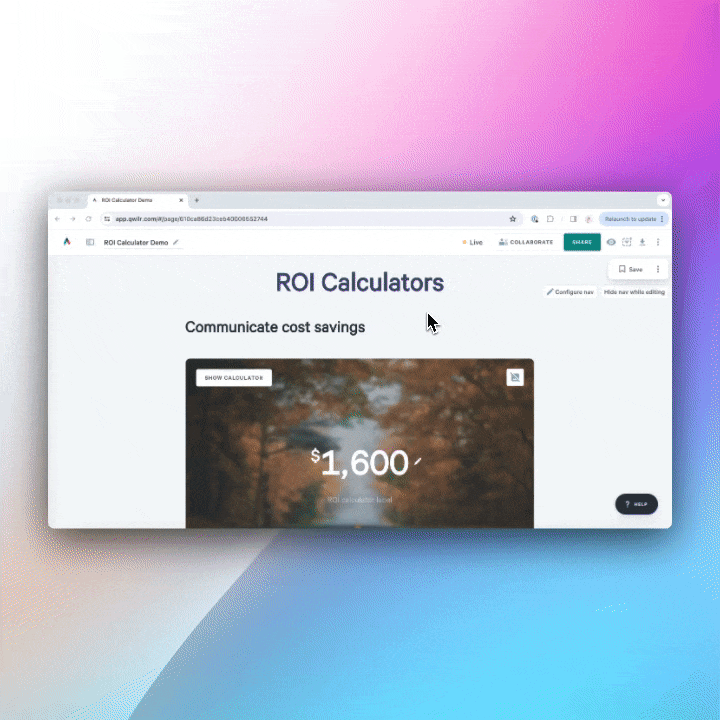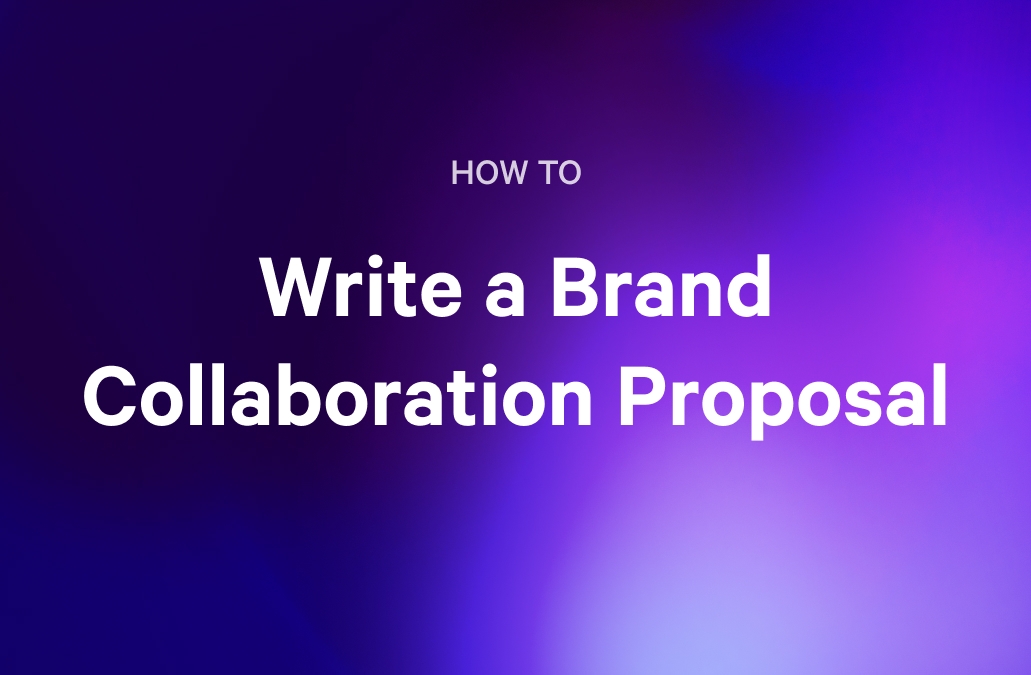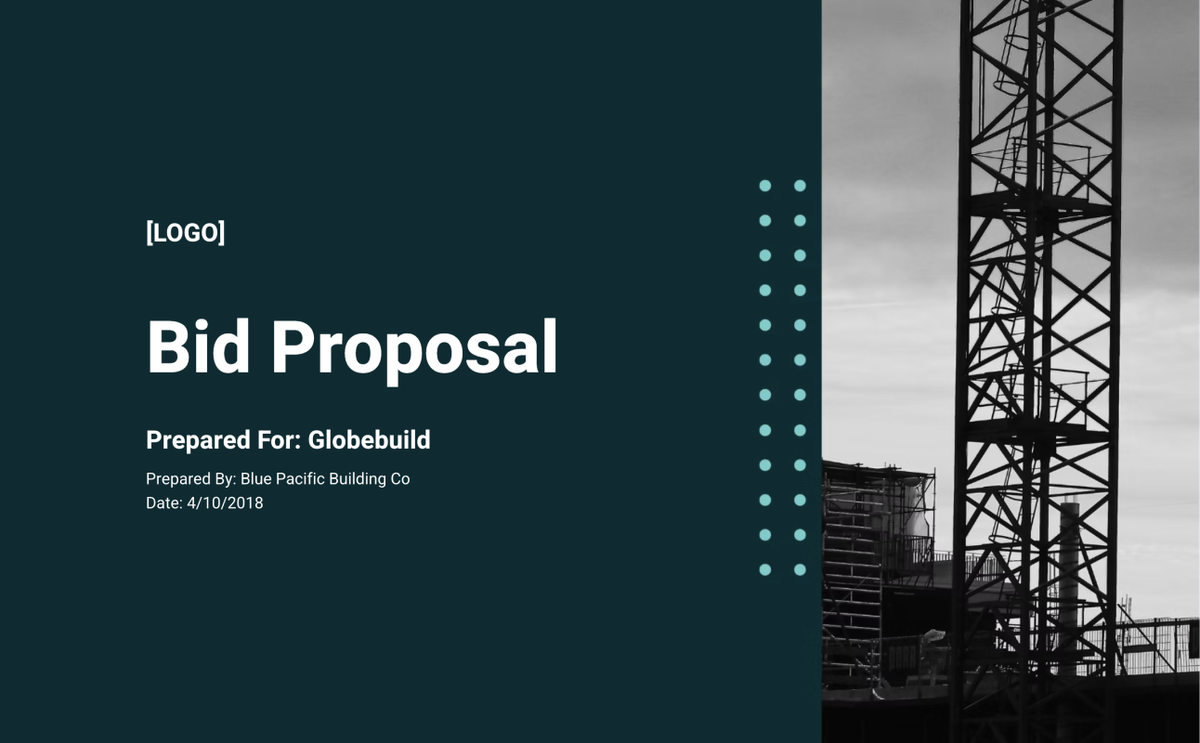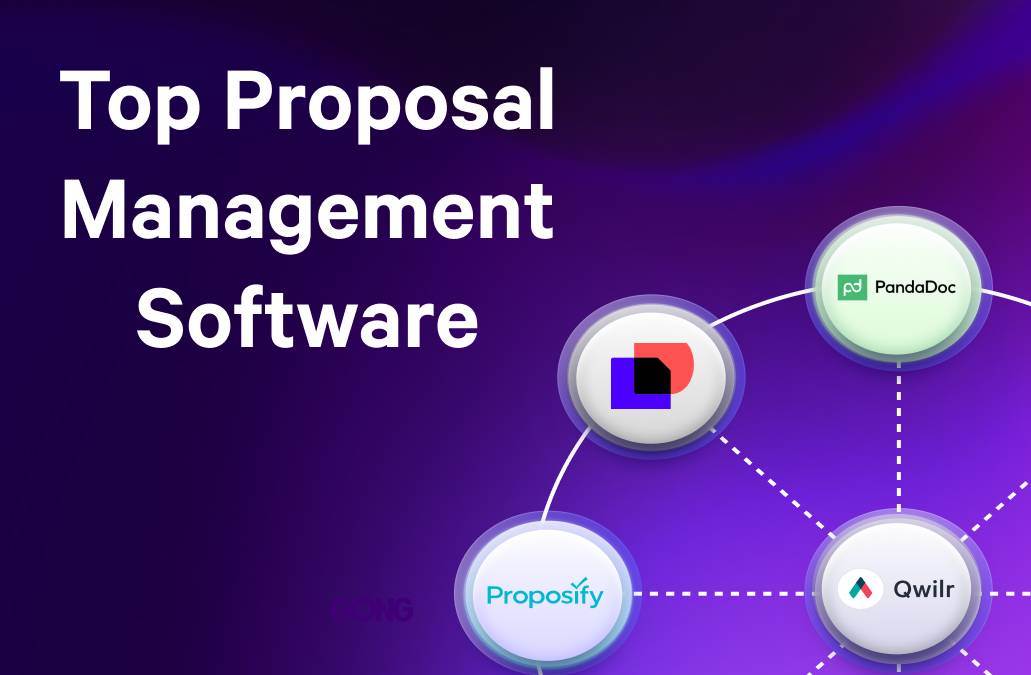Remember the last time you found the perfect company to partner with? You probably spent hours on their website, got excited about working together, and then chickened out of sending that first email to make way for a partnership.
Partnerships can double what you can do and bring in the skills you need. But the most exciting part? The ability to help your close rates (deals are 53% more likely to close when a partner is involved), prevent churn, and aid expansion into other markets, irrespective of whether you are a small business owner or a BDM.
But how to make it happen?
We share solid advice on writing a convincing partnership proposal and leave you with a customizable proposal template that will save you hours!
Key takeaways
- A partnership proposal is a document that outlines a potential collaboration between two parties, detailing objectives, benefits, responsibilities, and the terms of the partnership.
- There are various types of partnership proposals, including joint partnership proposals, sales partnership proposals, marketing partnership proposals, and sponsorship proposals.
- A strong partnership proposal provides strategic direction, sets clear expectations, manages risk and aligns resources, establishes measurable success, and builds trust through professionalism.
- Qwilr's business partnership proposal template can be used to create a professional and compelling proposal.
What is a partnership proposal?
By definition, a partnership proposal is a document or presentation designed to outline a potential collaboration between two parties. It details objectives, benefits, responsibilities, and the terms of the partnership, aiming to establish a mutually beneficial agreement. Such proposals often include financial, operational, and strategic considerations to align both parties' goals.
Put simply, it's the document that transforms your "we should work together" chat into a clear action plan—mapping out shared goals, who brings what to the table, and how you'll measure success. It covers everything from big-picture goals to nitty-gritty details like roles, resources, and revenue sharing.
Types of partnership proposals
Before we jump into the types of partnership proposals, it’s important to have an understanding of the four legal ways to structure a partnership. These include:
- General Partnership: Equal rights and liability shared among all partners
- LLP: Protected personal assets while maintaining equal management rights
- Limited Partnership: Mix of active managing partners and passive investors
- Joint Venture: Time-bound partnership for specific projects
These legal structures set the framework for common partnership proposals, but make sure the type of partnership matches your goals, risk comfort level, and how you want to run things day-to-day with a partner.
Joint Partnership Proposal
This partnership proposal outlines how two companies can combine core strengths to create something new together. For example, a software company partnering with a cybersecurity firm to develop a new secure cloud solution detailing shared development resources, revenue splits, and market approach.
Sales Partnership Proposal
A sales partnership proposal maps out how companies can collaborate to boost sales performance. For instance, a CRM software company partnering with IT consultancies to resell its platform outlining commission structures, sales targets, and training support.
Marketing Partnership Proposal
These types of partnership proposals focus on joint marketing initiatives between brands. These include:
- Simple Brand Collaboration /Partnership Proposal
A brand collaboration proposal outlines how two complementary brands can create value together through marketing, content, or product collaborations.
For example, a smoothie bowl brand and athletic wear company teaming up for a "Wellness Collection" covering audience reach cross-promotion activities, content creation, and shared success metrics. And if you’re looking for a handy template to get started—we’ve got you covered with Qwilr’s brand collaboration proposal template.
- Influencer Partnership Proposal
An influencer partnership proposal details how brands and content creators can work together effectively. Think of a home renovation brand partnering with a DIY content creator, specifying weekly YouTube tutorials using their tools, behind-the-scenes Instagram stories of projects in progress, dedicated how-to blog posts, and minimum engagement benchmarks.
Sponsorship Proposal
A sponsorship proposal is structured around one party supporting another's event, content, or initiative. Example: a tech company sponsoring a developer conference detailing booth placement, speaking slots, logo placement, lead generation opportunities, etc.
Benefits of a strong partnership proposal
So you’ve read about the various types of partnership proposals, but what are the benefits you ask?
- Provides strategic direction: Having a firm partnership proposal builds a shared vision and actionable roadmap that helps partners make decisions serving mutual goals rather than just individual interests.
- Sets clear expectations: When crafted effectively, a partnership proposal eliminates guesswork by explicitly defining roles, responsibilities, and deliverables. When everyone knows exactly what they're accountable for, collaboration flows smoothly.
- Manages risk and aligns resources: It addresses potential challenges upfront while mapping out how both parties will contribute time, money, and expertise. This proactive approach helps navigate difficulties and ensures neither partner is stretched too thin.
- Establishes measurable success: Concrete metrics and milestones are key for tracking progress. A solid partnership proposal lays down clear KPIs that help both parties stay focused and evaluate the partnership's effectiveness.
- Builds trust through professionalism: Your aim is to build confidence in the partnership from day one and a partnership proposal will strengthen this by demonstrating thoroughness, showing potential partners you've thought through all aspects of the collaboration.
What to include in your partnership proposal
Your brilliant partnership idea deserves more than a quick email pitch. Here's your roadmap for creating a proposal that covers all the right bases and shows partners you've done your homework.
Executive summary
An executive summary in your partnership proposal includes your partnership vision, concrete benefits for both parties, and implementation approach. This first impression needs to hook decision-makers with compelling market opportunities, clear financial benefits, and a confident execution plan and, therefore should be packed with your most convincing points.
Your business introduction
A business introduction is your spot to build credibility through relevant wins, market position, and unique strengths. When building this section, go beyond basic company stats and highlight growth metrics, market share, customer success stories, and industry recognition that matter to this specific partnership opportunity.
The opportunity
The opportunity section captures the market potential and perfect timing of your partnership proposal. Layer in market size data, growth trends, competitive gaps, and customer insights that prove why this collaboration makes sense.
Joint objectives
Joint objectives outline specific, measurable goals that excite both parties. To make an impact, include revenue targets, market expansion plans, customer acquisition goals, and operational efficiencies in this section and connect each objective to clear business value for both you and the prospect partner.
Partners
The partner description section in your partnership proposal details the strategic fit between you and the partner you’re seeking. It’s ideal to map out complementary strengths, resources, technology, market access, and expertise each of you bring to the table. Show how combining these creates advantages neither company could achieve alone.
Scope of work
The scope of work lays out your detailed execution strategy. Include project phases, key deliverables, resource commitments, decision-making processes, and risk management approaches. This is your blueprint for turning partnership potential into reality.
What success looks like
Success metrics establish concrete ways to track partnership impact. Use this section to define specific KPIs across revenue, market share, customer satisfaction, operational efficiency, and other vital areas. This is also a good spot to include measurement approaches and review processes.
Legal considerations
Legal considerations address key terms needed for a solid partnership agreement. Cover intellectual property rights, confidentiality requirements, liability provisions, termination conditions, and compliance needs. It’s best to flag any deal-breakers early to avoid surprises later.
Tips for writing a convincing partnership proposal
The best proposals go beyond basic business benefits to show a deep understanding of your potential partner's needs and market challenges. Let's break down how to create a proposal that gets partners excited about working with you.
Focus on the benefits
When writing a partnership proposal, don't just dive into what you want—flip the script and spotlight what's in it for them. Get specific with numbers and impact.
For example, if you're a content studio pitching to a web development agency, don't just say, "We'll handle the content," but show how your SEO-optimized content strategy has helped similar clients increase organic traffic by 45% and reduce bounce rates by 30%.
Demonstrate your value
The foundation of a partnership lies in your partner being able to see value in it. That’s why it’s key to back up your pitch with solid wins that matter to this specific partnership. Show off relevant case studies, client testimonials, and especially previous collaboration wins that prove you can deliver consistently.
Include engaging media
When shipping your partnership proposal out, know that nobody wants to wade through walls of text. So, make sure you’re turning your key points into visuals that tell your story at a glance. Think portfolio highlights, performance dashboards, or workflow diagrams showing how you'll integrate with their team.
With Qwilr, you can make proposals interactive by embedding short Loom videos that walk through past project successes or by adding Calendly links for easy next steps!

Showcase your value with an interactive ROI calculator
Don't just tell partners about potential returns— let them calculate their specific benefits. Create a simple, customizable calculator that lets them plug in their numbers and see concrete results. For example, if you're a marketing agency using Qwilr’s proposal management software, your ROI calculator could show how your services impact lead generation, conversion rates, and revenue based on their current metrics.

Involve the whole team
Finally, get your key players involved from the start when building a proposal, as each one of them brings crucial insights that strengthen your proposal.
In larger companies, creative leads can outline realistic production capacity and quality standards, project managers can detail resource needs and timeline feasibility, and account managers can highlight potential client service challenges. Your development team might spot technical integration issues while your operations folks can confirm pricing and delivery capabilities.
Check out our video on creating successful business proposals backed by real data:
Business partnership proposal template
While every partnership is unique, you don't need to start your proposal from scratch each time, more so when you're probably already stretching thin running your business.
If you don’t know where to begin, Qwilr’s business partnership proposal template allows you to focus on what matters: customizing the pitch for your potential partner and nailing down the specifics that will make your collaboration successful.
Apart from saving time, money, and effort, Qwilr’s ready-to-use partnership proposal template streamlines your proposal process, increases efficiency, enhances collaboration, and ensures professionalism. While visually appealing layouts appeal to the clients, customizable features allow busy business owners like you to update your proposal as needed. Plus, the added benefit of having everything centralized ensures that nothing is lost in email threads or random PDFs.
Qwilr’s business partnership proposal template comes loaded with sections like:
- Executive summary section lays down the key highlights of your partnership vision and value proposition in a quick, digestible format.
- The opportunity section explains the market gap or business potential you've identified that makes this partnership valuable right now.
- Our joint objectives outlines specific goals both partners aim to achieve together through this collaboration.
- 12-month goals section breaks down concrete targets and milestones you plan to hit in your first year of partnership.
- What success looks like section can be used to define clear, measurable outcomes and KPIs that will indicate the partnership is working.
- About the company section showcases relevant experience, capabilities, and wins that make you an ideal partner.
- Next steps section maps out clear, actionable items to move the partnership forward after the proposal.
- Contact section provides direct access to key decision-makers and team members involved in the partnership.
In a nutshell, it’s a proposal template that grows with your business, guiding you through partnerships that expand your business capabilities and reach.
Create unstoppable partnership proposals with Qwilr
Your next great partnership starts with understanding what matters most to your potential partner. By focusing on their challenges and mapping out clear solutions, you've already won half the battle.
We've given you the building blocks— from templates to tips. Start with this framework, make it your own, and show potential partners why working together makes perfect business sense.
Join thousands of businesses building successful partnerships with Qwilr and sign up for a free trial to amp up your partnership game!
About the author

Brendan Connaughton|Head of Growth Marketing
Brendan heads up growth marketing and demand generation at Qwilr, overseeing performance marketing, SEO, and lifecycle initiatives. Brendan has been instrumental in developing go-to-market functions for a number of high-growth startups and challenger brands.


